This homemade strawberry jam is made without pectin and uses only three ingredients, all while packing the sweet and fruity taste of spring and summer berries in a jar! Store-bought jams are loaded with sugar, and just don’t have that pop of flavor you get with homemade jam.
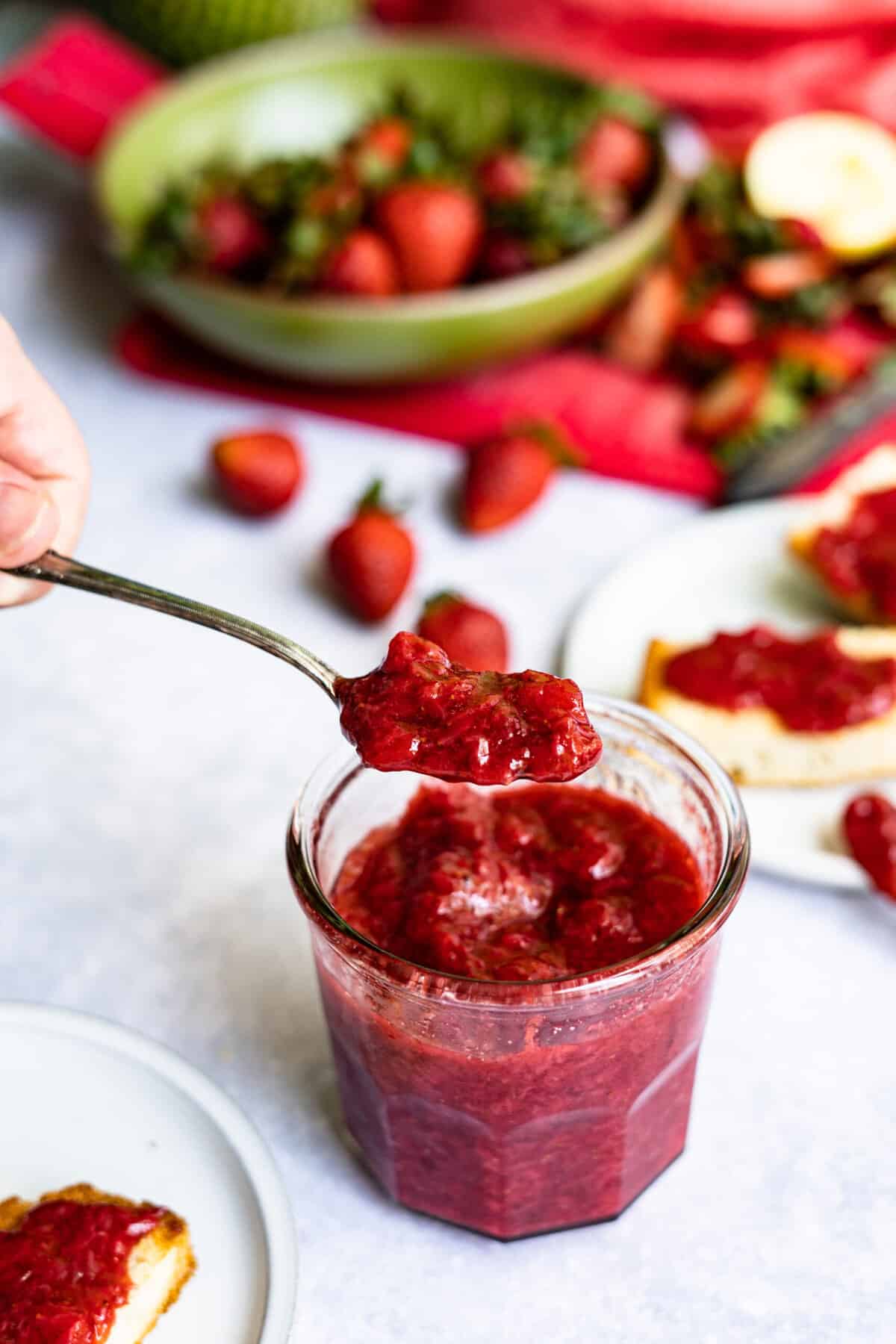
Making your own jams at home is straightforward and easy, and you can get truly creative with your flavors! I use my homemade strawberry jam in my strawberry cheesecake cinnamon rolls, and in my strawberry lemon bars, but it’s also delicious just spread on some toast in the morning!
Jump to RecipeJump to:
💕 why you'll love this strawberry jam recipe
🍓 flavor-packed. Made with peak-season strawberries, full of sweetly floral flavor.
🙌 easy to follow. This recipe is straightforward and easy to follow, with no fancy equipment needed.
🤌 limited ingredient. Uses a total of three ingredients— that’s it!
🛒 ingredients

- strawberries - you can use fresh or frozen strawberries to make this recipe. When strawberries are in peak season (and on sale!), I love to buy a ton of them and freeze them myself. Peak-of-season berries are so much more flavorful than frozen store bought strawberries, so it’s a great way to keep flavorful fruit on hand all year round!
- granulated sugar - regular white granulated sugar works best in this recipe, though you can substitute it for your favorite sweetener if you like. Your finished jam might not be as thick though, so keep that in mind.
- lemon - lemon is our secret ingredient in this jam because lemon naturally contains pectin! The citric acid in lemon also helps to balance the sweetness of the sugar and the fruitiness of the strawberries.
See recipe card for quantities.
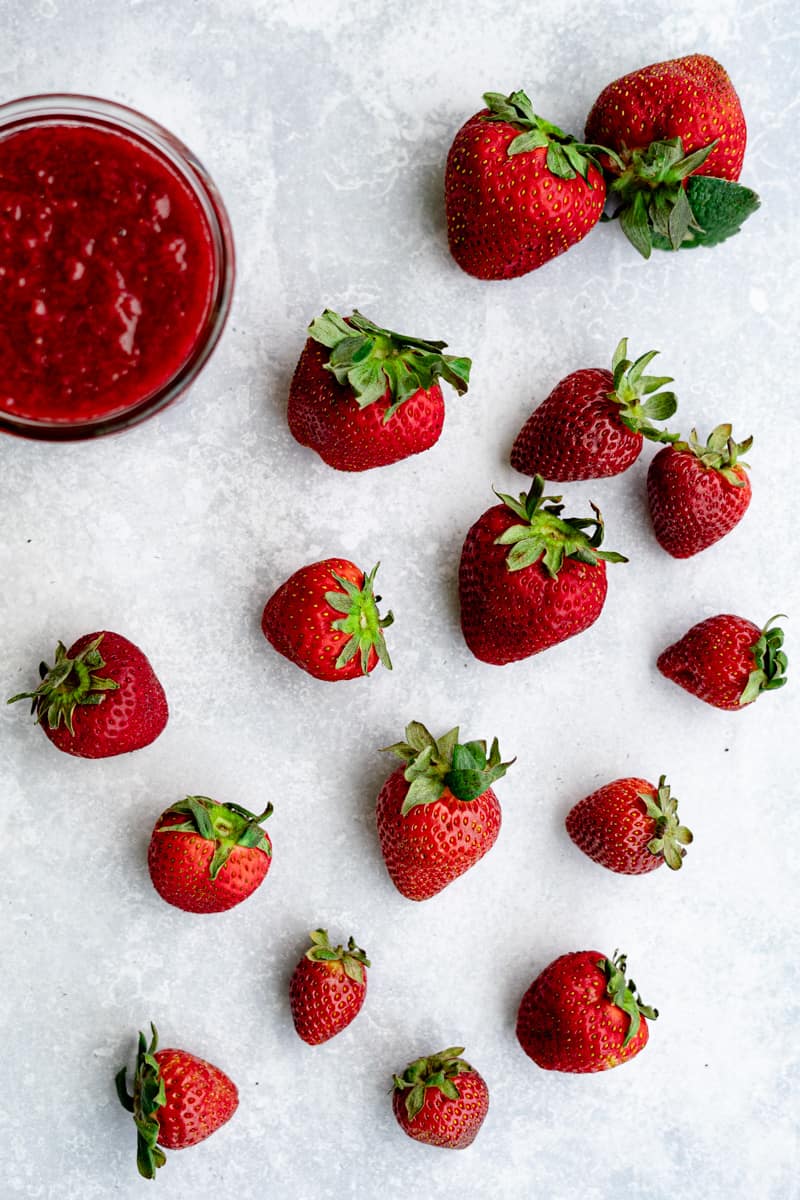
Try to select smaller-sized berries when you are cooking using strawberries because they'll have a much better flavor than giant-sized berries. The darker the berry, the sweeter they will be. Strawberries do not ripen after they are harvested, so what you see is what you get! If your berries are lighter in color, they'll have a more mild flavor.
🍳 instructions
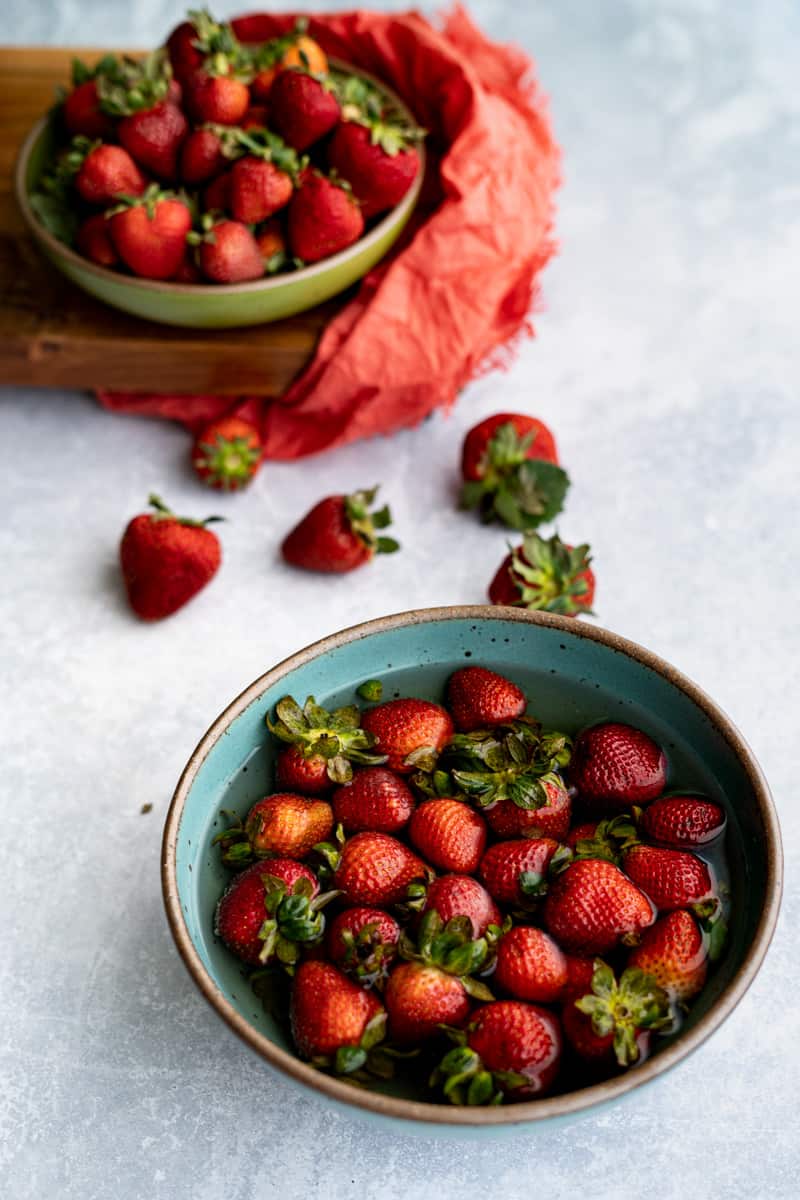
Step 1: Wash and trim your strawberries, and hull the berries for the best flavor. You can leave the hulls in, but it will (lessen the) flavor a bit.
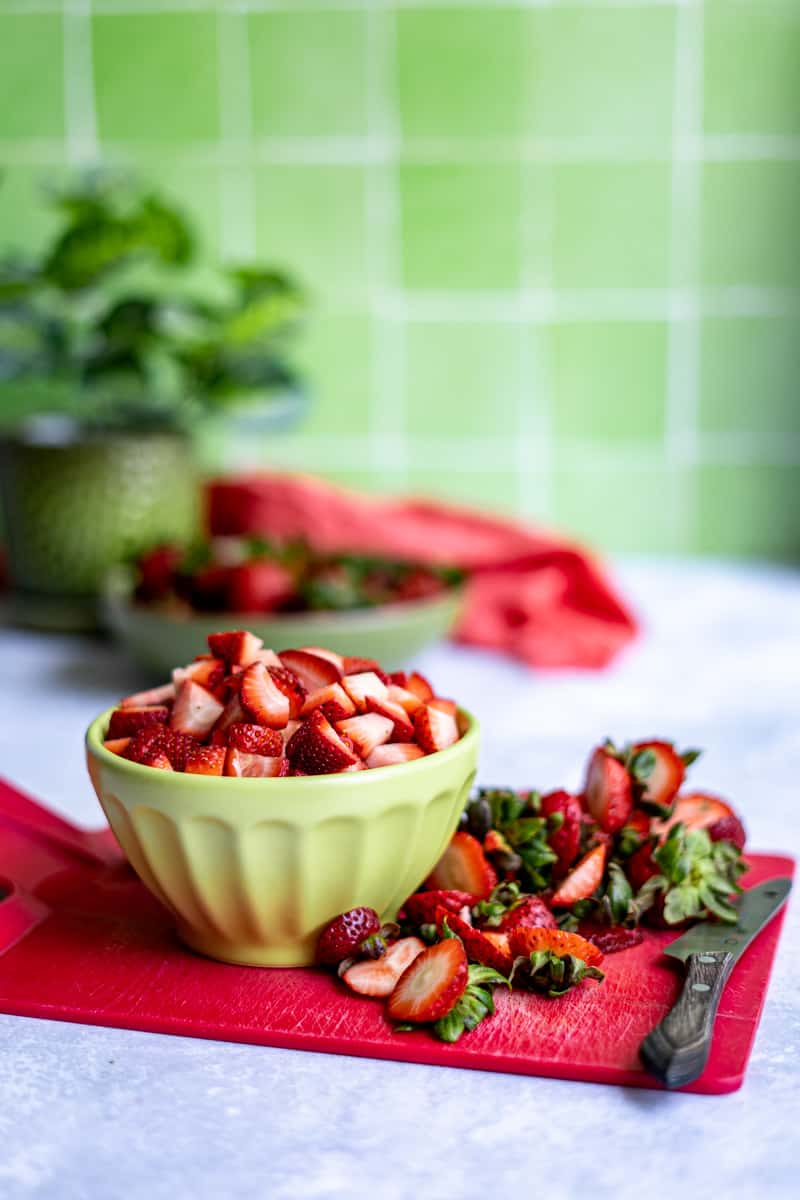
Step 2: Chop your berries into roughly the same size pieces, about ¼ of an inch per piece. If you like a chunkier jam, use larger pieces!
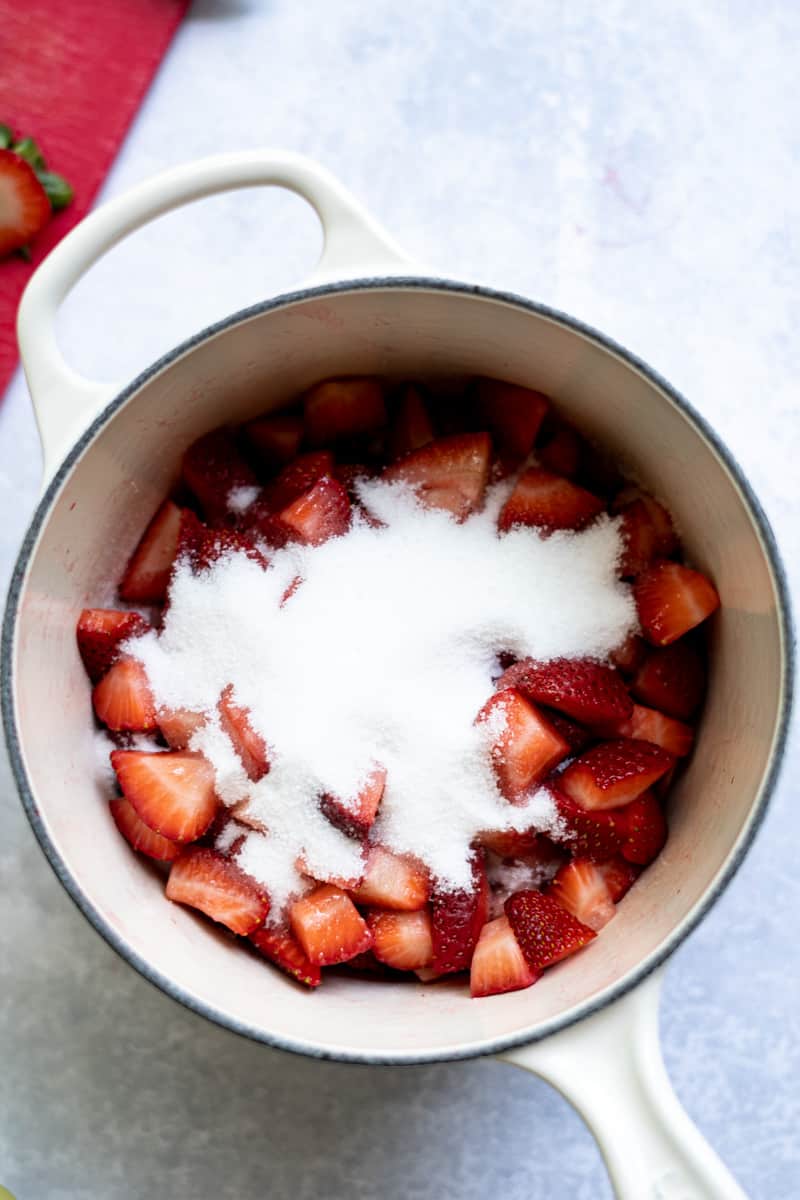
Step 3: Combine your strawberry pieces with the granulated sugar, and allow the fruit to sit for about 5 minutes.
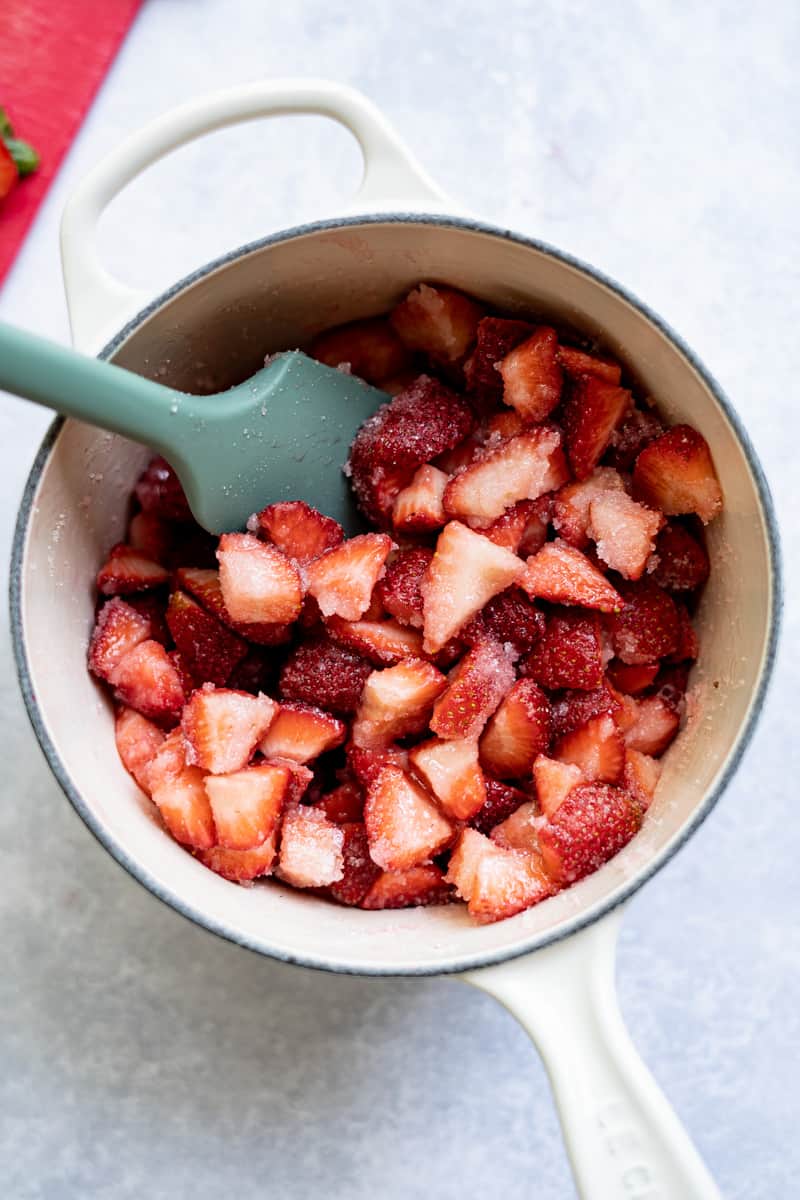
Step 4: This process is called maceration: the sugar molecules are hygroscopic, which means that they absorb water.
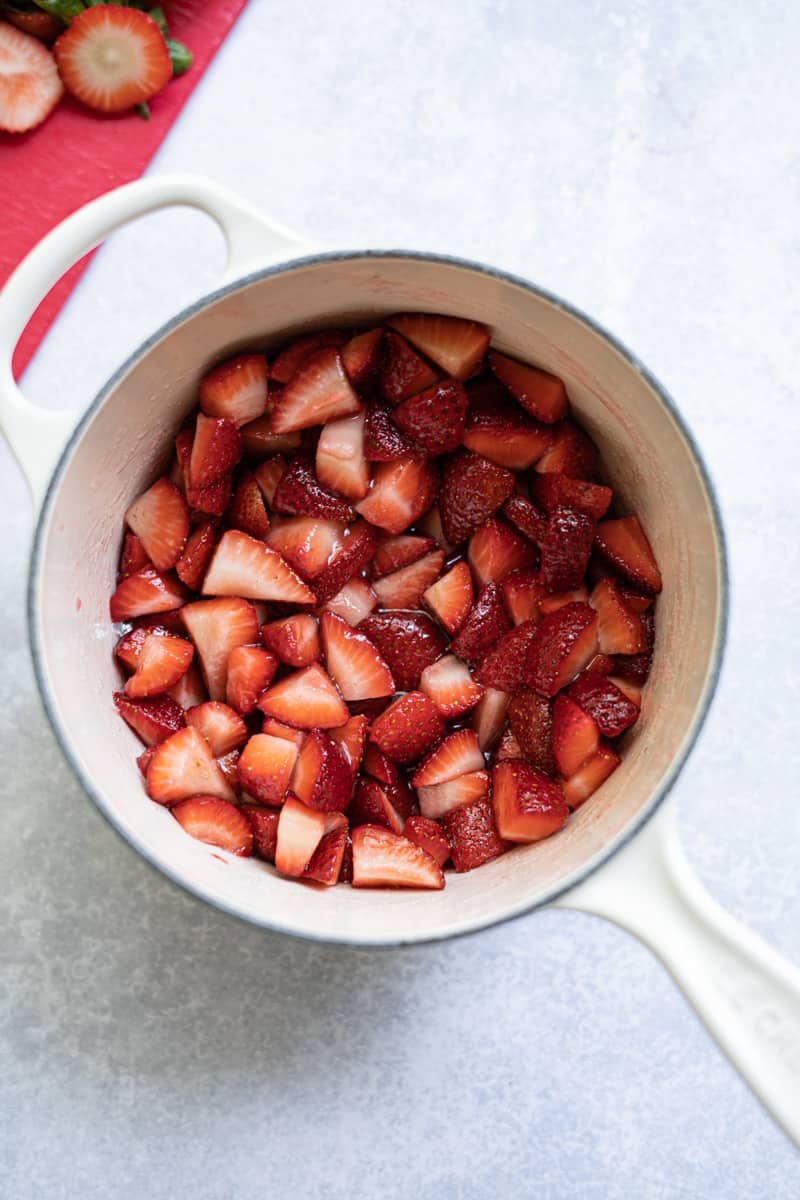
Step 5: The sugar “pulls” water out of the strawberries and creates a sort of strawberry soup right in the pot!
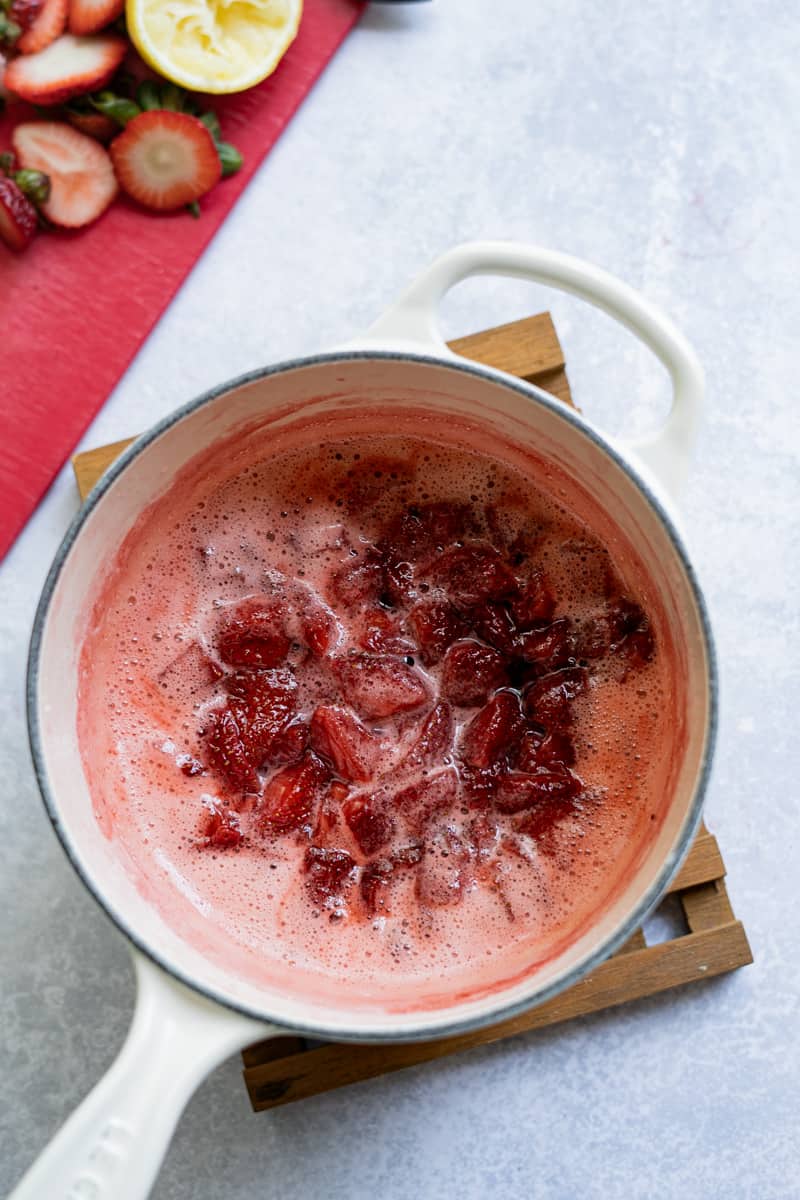
Step 6: Place the saucepan over medium heat and stir the berry-sugar mixture while stirring every few minutes until the sugar has dissolved and the berries have softened.
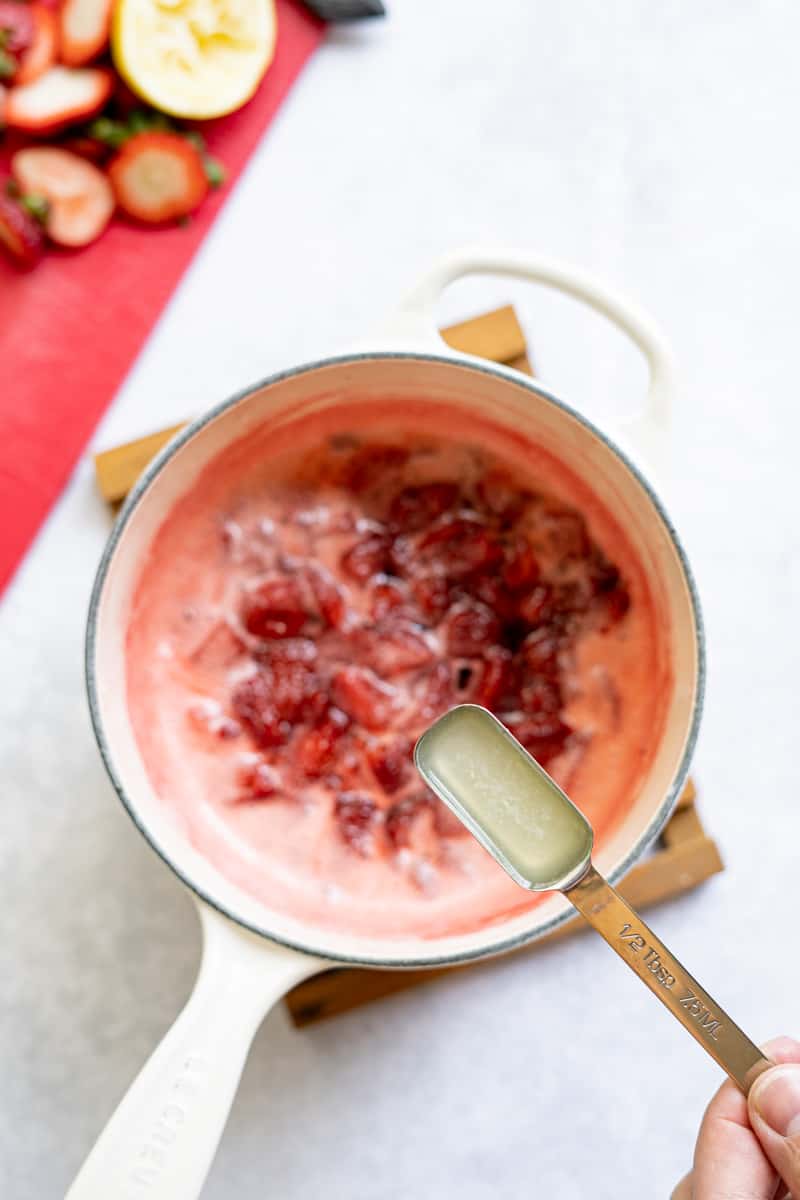
Step 7: Add in the lemon juice. Keeping the pan on medium heat, allow it to maintain a strong simmer and cook for 30-45 minutes. You can mash the strawberries down a bit with your spatula every 5-10 minutes or so, to break up the fruit a bit more.
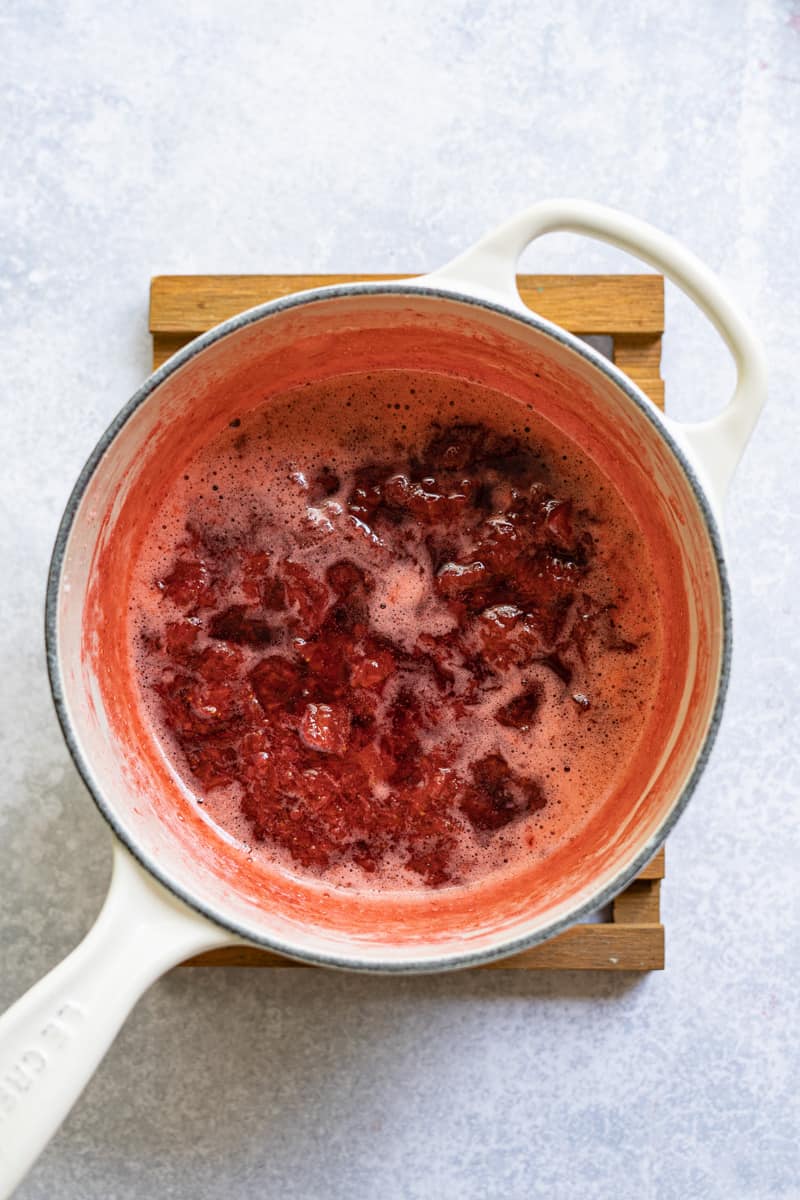
Step 8: As the jam cooks, you’ll start to notice it thickening as the moisture evaporates.

Allow your strawberry jam to cool, then store your jam in an airtight container, like a glass jar, for up to a week in the fridge. You can also freeze it for longer storage.
💡 tips and tricks for getting it right
🍽️ Serving Tips - Spread your jam on freshly baked bread, toast, or level up your PB&Js at home. You can also use this jam in any recipe that uses strawberry jam, like in my strawberry cheesecake cinnamon rolls or strawberry lemon bars!
ℹ️ Troubleshooting Tips - Use smaller berries for the best flavor, and make sure you choose berries that are fully ripe. Strawberries do not ripen more after they are picked, so if your berries have white or yellow portions on them, unfortunately, they will be very mild or even bitter in flavor.
Start with using less sugar if you like a more fruit-forward jam. You can always pull a spoonful of jam out of the pot, allow it to cool, and taste it while you are cooking. If you like, you can add more sugar to sweeten things up!
⚖️ Scaling Tips - This recipe can easily be doubled or tripled if you want more jam! You'll need to use a larger pot, and you may need to let your recipe simmer a bit longer to get to the right consistency.
top tip
Set a timer on your watch or phone so you don’t forget about your bubbling jam mixture! 😉 I’ve found the sweet spot to be around 45-60 minutes of simmering for a thick jam.
♻️ substitutions
Missing an ingredient? No problem. Check out these tried-and-true substitutions, or comment below with your question. I’m here to help you troubleshoot!
- sweetener - you can use natural sugar instead of granulated sugar with no changes to the recipe. If you want to use an alternate sweetener, like honey, your finished jam will be thinner than jam made with granulated sugar. Allow the mixture to cook for 10-20 minutes longer to cook out more liquid, and use ¼ - ⅛ of a cup less honey than sugar because honey is sweeter. (So if you use ¾ cup of sugar, use ½ cup of honey and sweeten to taste from there.)
- berries - if you don’t have strawberries on hand, you can use other berries like blueberries, raspberries, or blackberries to make this recipe.
🎛️ variations
Feeling like a rebel?! Feel free to stray from the recipe card using these variations, or leave me a comment with your own!
- Roasted - Roast the strawberries for 20-25 minutes at 350ºF to deepen the flavor of the berries before starting the recipe. Be sure to scrape off all the juices that cook out of the berries and use them in the pan, too!
- Balsamic - elevate your jam with a touch of balsamic vinegar! The sweet, acidic flavor of the balsamic vinegar adds a flavorful punch to the strawberries.
🧰 equipment needed
- 1.5 quart saucepan - you’ll need a heavy-bottomed saucepan that can hold at least 4 cups, so you have plenty of room to stir the ingredients. I love using my Le Creuset saucepan for this recipe. It's enameled cast iron, so it distributes the heat evenly throughout the cooking process. Avoid using aluminum pans if possible-- when you are cooking things that have acid (like with lemon juice) your foods can take on a metallic flavor.
- silicone or rubber spatula - you’ll want a cooking tool that doesn’t get hot, and can handle the heat and stickiness of stirring the jam. I love using my tools from GIR, You can use a wooden spoon as an alternative.
- mason jar - the easiest way to store jam is in a mason or canning jar. Opt for a brand that can handle the heat, like Ball, Le Petit, or Weck. The sugar and fruit mixture gets hot, even when slightly cooled, and needs a heat-stable storage container.
🫙 storage tips
Store your jam for up to a week in the fridge. Jams that last longer have to be stored in sanitized jars and sealed using proper canning methods, which we aren’t doing here, so it won’t last as long as if you were to heat seal sterilized jars.
You can freeze your jam for longer-term storage for up to three months.
💬 q+a
Yes! Frozen strawberries will need to either be thawed first, and they'll have much more moisture in them, so you may need to simmer them for a bit longer.
You can store this homemade strawberry jam in the fridge for up to a week. You can also freeze it for up to three months. Be sure to let it thaw in the fridge overnight before using.
Lemon is high in pectin, which helps the jam to have a gel-like consistency. The acidity of the lemon also adds brightness to the flavor of the strawberries and helps to balance the sweetness in the recipe.
Pectin is a naturally occurring thickener in many foods, like fruits, that helps them become jammy when cooked. Pectin helps foods achieve a gel-like consistency which can be useful for things like jams and jellies. While you can add pectin to your recipes, it is possible to utilize naturally occurring pectin to help thicken jams, sauces, and jellies.
Yes! Many fruits naturally contain trace amounts of pectin, and you can also reduce your sugar-fruit mixture to help the water within the fresh fruit to evaporate.
Adding fruits that are higher in pectin, like lemon juice, helps to up the naturally occurring pectin in the recipe!
Jam has fruit chunks in it, whereas jelly is puree without fruit chunks.
You can blend up your jam using an immersion blender if you prefer to have a more jelly-like consistency. You can also blend, then strain your jam if you don't like it to have pieces of fruit at all!
🍽️ recipe
If you make this recipe, please leave a review in the comments and a star rating!
⭐️⭐️⭐️⭐️⭐️
I read every single comment! I also love connecting on social media, so snap a pic and hashtag it #myrecipeforfun and tag me on Instagram, TikTok, or pin this recipe on Pinterest!
🥣 recipe

Strawberry Jam (Without Pectin)
Equipment
- 1 1.5-quart saucepan heavy bottomed, non-reactive.
- 1 glass jar with tight fitting lid
- 1 baking scale
Ingredients
- 600 grams strawberries about 1.5 pints of berries
- 100 grams granulated sugar ½ cup
- 1 tablespoon lemon juice from ½ of a lemon
Instructions
- Wash, trim, and hull 600 grams of strawberries.
- Slice the berries into halves or quarters, depending on how chunky you would like your jam. The berries will break down as they cook.
- Place your berries into a 1.5 quart sauce pan.
- Add 100 grams of sugar on top of the strawberries, and give everything a good stir.
- Allow the sugar and berries to sit for 10 minutes. This process is called maceration. The sugar pulls moisture out of the berries.
- Place the saucepan over medium-high heat, and allow the mixture to come to a boil for 5-10 minutes.
- Lower the heat to medium, and add in 1 tablespoon of lemon juice.
- Cook the mixture for 30 - 60 minutes, stirring occasionally and allowing it to maintain a strong simmer. If it is boiling too much, lower the heat to medium-low.
- You will notice the mixture becoming thicker, and jammy. You can also use your spatula to smush the berries against the side of the saucepan to break down the berries even further. Once the mixture is thick and bubbling, turn off the heat, but leave the pan on the burner.
- Allow the mix to cool for at least 30 minutes before transferring to a clean glass jar. Be sure to use a jar that can withstand the high heat from the jam as it will still be quite warm.
- Seal your jam with a tight fitting lid, and place it in the fridge to cool overnight. The jam will thicken up considerably as it cools.
- Store your jam in the fridge for up to one week, or freeze it for up to three months.


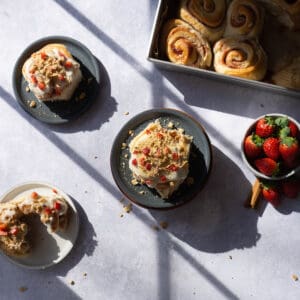
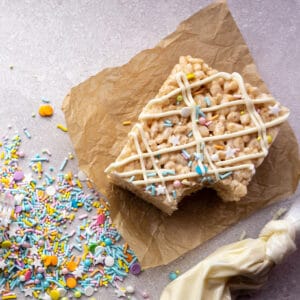
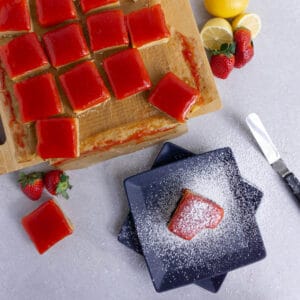
Leave a Reply